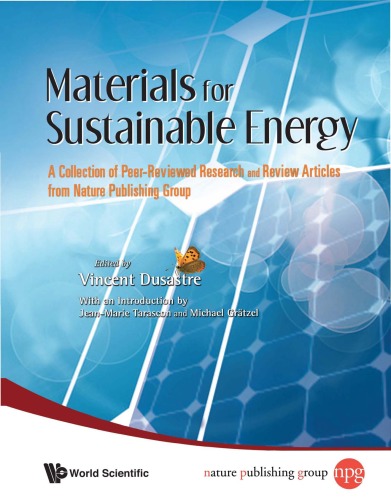

Most ebook files are in PDF format, so you can easily read them using various software such as Foxit Reader or directly on the Google Chrome browser.
Some ebook files are released by publishers in other formats such as .awz, .mobi, .epub, .fb2, etc. You may need to install specific software to read these formats on mobile/PC, such as Calibre.
Please read the tutorial at this link: https://ebookbell.com/faq
We offer FREE conversion to the popular formats you request; however, this may take some time. Therefore, right after payment, please email us, and we will try to provide the service as quickly as possible.
For some exceptional file formats or broken links (if any), please refrain from opening any disputes. Instead, email us first, and we will try to assist within a maximum of 6 hours.
EbookBell Team

0.0
0 reviews
ISBN 13: 9789814317641
Author: Swinbanks David
The search for cleaner, cheaper, smaller and more efficient energy technologies has to a large extent been motivated by the development of new materials. The aim of this collection of articles is therefore to focus on what materials-based solutions can offer and show how the rational design and improvement of their physical and chemical properties can lead to energy-production alternatives that have the potential to compete with existing technologies. In terms of alternative means to generate electricity that utilize renewable energy sources, the most dramatic breakthroughs for both mobile (i.e., transportation) and stationary applications are taking place in the fields of solar and fuel cells. And from an energy-storage perspective, exciting developments can be seen emerging from the fields of rechargeable batteries and hydrogen storage.
handbook of emerging materials for sustainable energy
advanced materials for sustainable energy applications
functional materials for sustainable energy applications pdf
advanced materials for sustainable energy
smart materials for sustainable energy
materials for sustainable energy applications
Tags: Swinbanks David, Sustainable, Energy